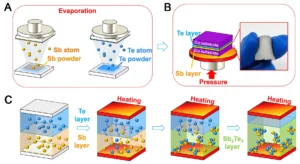Harmonic oscillation is a fundamental concept in physics, describing the repetitive motion of a system around an equilibrium position. When this motion is subjected to damping, a resistive force that opposes the motion, it gives rise to damped harmonic oscillation. Understanding this phenomenon is crucial in various fields including physics, engineering, and applied mathematics. In this article, we delve into the intricacies of damped harmonic oscillation, examining its characteristics and exploring the differential equation governing its behaviour.
Understanding Damped Harmonic Oscillations
Damped harmonic oscillation occurs when a system, such as a mass attached to a spring, experiences both restoring force and damping force. The restoring force, typically proportional to the displacement from equilibrium, seeks to return the system to its equilibrium position. However, the damping force, which is proportional to the velocity of the system, opposes this motion, causing the oscillations to decrease in amplitude over time.
When an external resistive force due to air or medium acts on an oscillator, the motion of the oscillator is reduced and the oscillations are called damped oscillations. The external resistive force is due to friction or viscosity of air or medium in which oscillator is moving.
Differential Equation of Damped Harmonic Oscillator
The external resistive force is also called damping force and it is proportional to velocity of an oscillator. Thus in external resistive medium, two forces are acting on the oscillator:
(i) restoring force which is proportional to the displacement and
(ii) external resistive force proportional to the velocity.
Restoring force tries to maintain oscillations while damping force opposes the oscillations. Due to this opposition, the amplitude of oscillations decreases with time.
We have Restoring force proportional to x. Resistive force directly proportional to dx/dt
Therefore,
Restoring force = – kx
Resistive force = – c (dx/dt)
The negative sign in the first equation shows that the restoring force is opposite to the displacement and second equation shows that the resistive force opposes the motion.
Thus the total force acting on the oscillator is
F = – kx – c (dx/dt) ……(1)
According to Newton’s second law of motion,
F = m (d2x/dt2) ..….(2)
Therefore,
m (d2x/dt2) = – kx – c (dx/dt) ….. from (1) and (2)
where m > 0 is the mass, k > 0 the spring force constant, and c > 0 a constant (with the dimensions of N/m/s) that parameterises of the damping.
m (d2x/dt2) + c (dx/dt) + kx = 0
This is a second order, linear and homogeneous differential equation in x. It is the differential equation of motion for damped oscillations.
The behaviour of a damped harmonic oscillator can be categorised into three regimes based on the damping coefficient:
- Underdamped Oscillation: In this regime, the damping is relatively weak compared to the restoring force. The system undergoes oscillations that gradually decrease in amplitude over time. The motion exhibits a characteristic decay with oscillations around the equilibrium position.
- Critically Damped Oscillation: When the damping force exactly balances the restoring force, the system is said to be critically damped. In this scenario, the system returns to equilibrium in the shortest possible time without oscillating. Critically damped oscillation is often desirable in engineering applications where a quick return to equilibrium is necessary.
- Over damped Oscillation: In the over-damped regime, the damping force dominates the restoring force. As a result, the system returns to equilibrium without oscillating. Unlike critically damped oscillation, the return to equilibrium in over-damped oscillation takes longer due to the stronger damping.
Conclusion
Damped harmonic oscillation is a phenomenon encountered in various physical systems, where the motion of the system is influenced by both restoring and damping forces. By exploring the differential equation governing the behaviour of a damped harmonic oscillator, we gain insights into the dynamics of the system and its response to different damping conditions. Understanding these principles is essential for designing and analysing systems across numerous disciplines, from mechanical engineering to electrical circuits and beyond.




